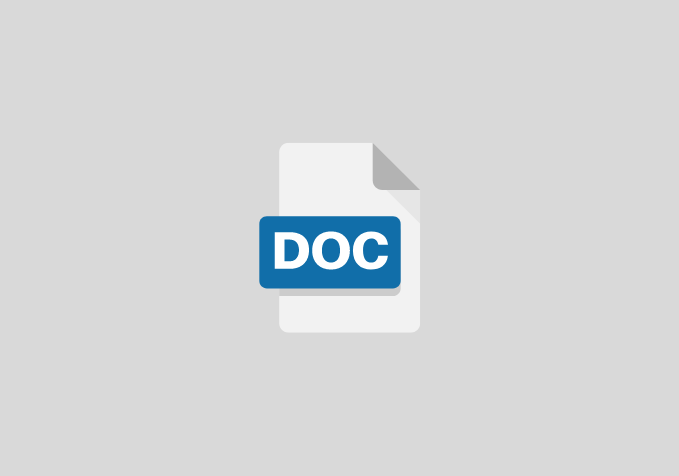Health Implications of Improper Solid Waste Disposal in Rivers State, Nigeria
CHAPTER ONE
OBJECTIVE OF STUDY
The main objective of this study is to assess the health implications of improper solid waste disposal in Rivers State, Nigeria. The following are the specific objectives of the study:
- To examine the impact of poor solid waste disposal system on the health of the community
- To examine the public health effects of improper Solid Waste Management
- To examine the overview of Solid Waste Management
- To carry out a case study analysis on the improper solid waste disposal in Rivers State
- To examine the control measures for solid waste disposal
CHAPTER TWO
Impact of poor solid waste disposal system on the health of the community
- Poor solid waste disposal system produces gastrointestinal, dermatological, respiratory, genetic, and several other kind of infectious diseases
- Poorly managed solid wastes are potentially hazardous to the health of the community.
- Wastes from different sources (industrial, agricultural, hospitals add/or households) can enter human bodies through different routes.
- These toxicants can be found in air, water and soil and could find their way into the human body through inhalation, ingestion absorption
- Skin Disorders, Respiratory Abnormalities, Abdominal and Intestinal Problems, Dental Disorders, Ear Infections, Skeletal Muscular Systems problems, Central Nervous System impairment, Eye Infections, Blood Disorders, malaria, chicken pox, septic wounds and congenital abnormalities, cardiovascular diseases and lung cancer are among health related problems due to improper solid waste management system in urban areas
CHAPTER THREE
Public Health Effects of Improper Solid Waste Management
he effects of poor storage and collection of solid waste, and landfill (disposal site) below ideal design and performance standards on public health are overwhelming because life is dependent on water, soil and air
- Epidemiological effects
- Physical effects
- Social effects
- Other socio-Economic impact costs of landfills
CHAPTER FOUR
Summary of key findings
- The numerous dumpsites and heaps of dumps here and there in the Country pose serious environmental and health challenges and there is a need to check them.
- By adopting the wealth aspect from waste or treating solid wastes as resources, in terms of waste management strategy has effectively become not only a service but an instrument for alleviating poverty.
- The Waste Management Society of Nigeria (WAMASON) with interest to develop waste management industry and practice in Nigeria has intervened in the following ways amongst others;
- Develop professional training courses to meet the manpower gap need of the waste industry
- Occasionally conduct campaigns to enlighten the public on proper waste handling.
- Develop a proposed Bill on National Waste Management and Control (the project is yet to be actualized)
Recommendations
The following recommendation should be taken into consideration:
- There should be an aggressive enlightenment campaign for segregation of waste and recycling Programmes and support for scavengers in every community in Nigeria
- The generation of waste should be avoided where practicable and economically feasible;
- Where practicable, waste reduction, waste recovery, reprocessing, reuse and recycling should be encouraged.
- Residents in municipal areas should be educated on the need to segregate waste in order to assist in the recycling process.
- The open dumps in many cities should be upgraded to semi-landfills in order to prevent infiltration of leachate and contamination of ground water
- Comprehensive legal framework and enforcement of the existing regulations
- Right attitude of the public towards solid waste disposal
CHAPTER FIVE
Advertisements
REFERENCES
- Know Risk (2005), United Nations, Geneva, Switzerland.
- Kundzewicz, Z.W., Budhakooncharoen, S., Bronstert, A., Hoff, H., Lettenmaier, D., Menzel, L. and Schulze, R. 2002. Natural Resources forum: Coping with Variability and change: Floods and Droughts. Journal, 26 (4): 263-274.
- Lind, N.,Mahesh, P. and Nathwani, J. Structural Safety: Assessment and Affording the Control of Flood Risk. Journal 31 (2): 143-147.
- Lindsell, K. M. and Prater, S. C. Abstract on “Assessing L.G.A Impacts of National Disasters”: 176-178 (electronic), National Hazard Review vol. 4, No. 4, November, 1, 2003.
- Living with Risk (2002): A global Review of Disaster Reduction Initiatives, Geneva Switzerland.
- Mirza, Q.M.M., Dixit, A. and Nishat, A. Natural Hazards. Journal 28:7.


